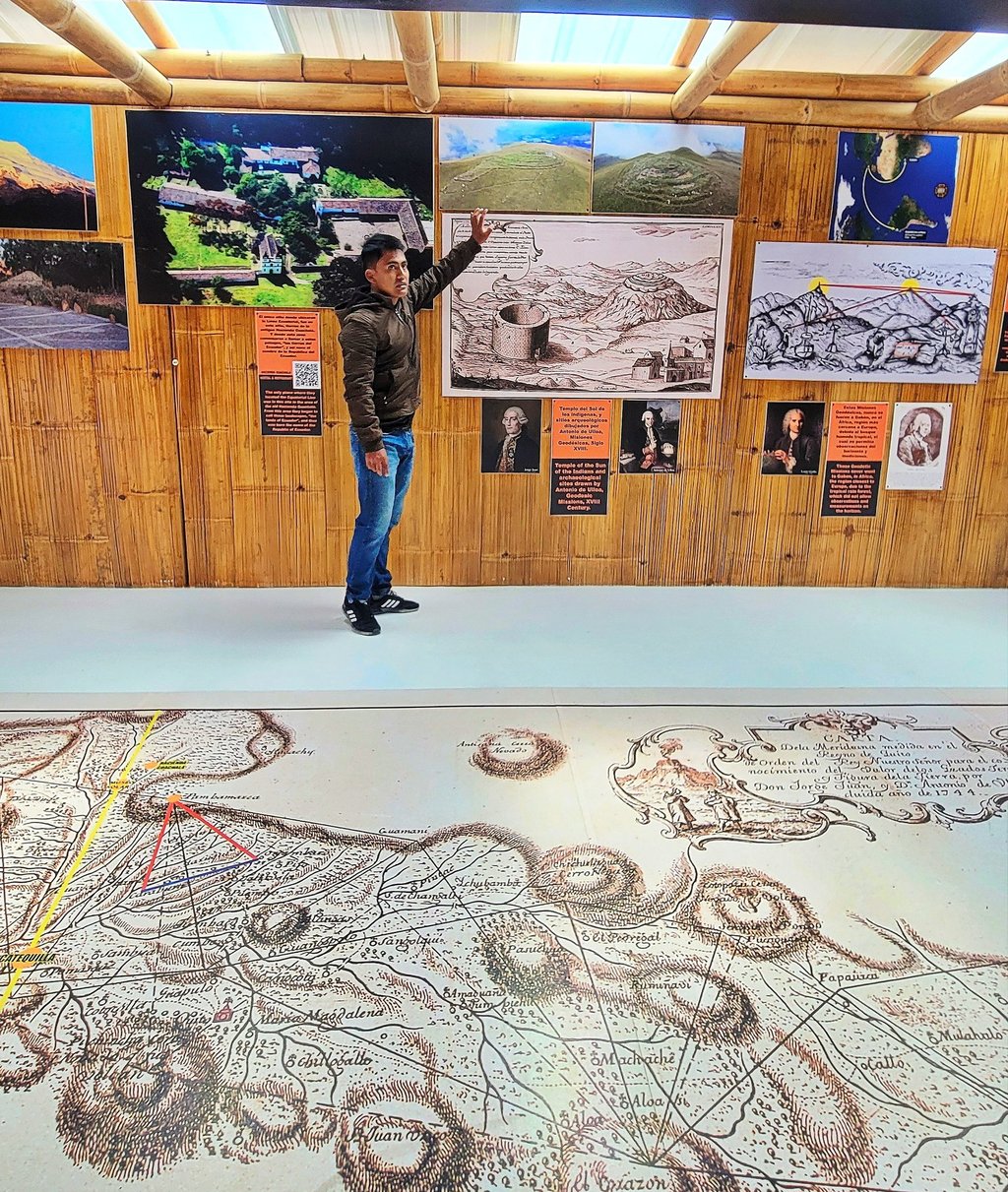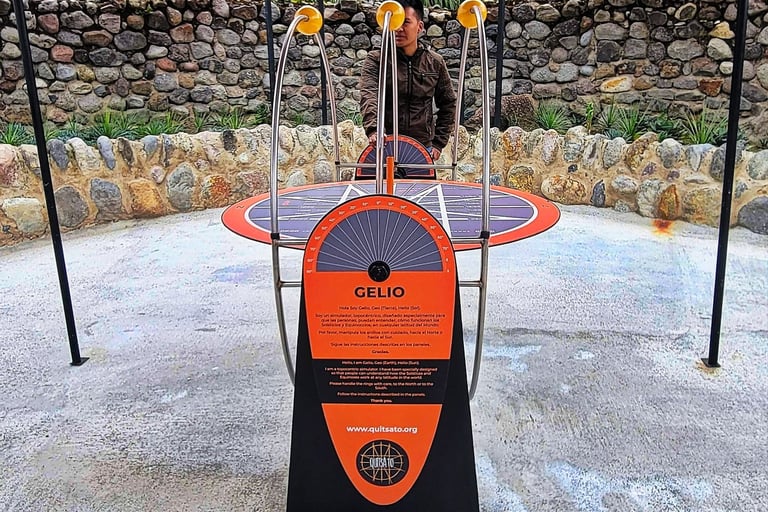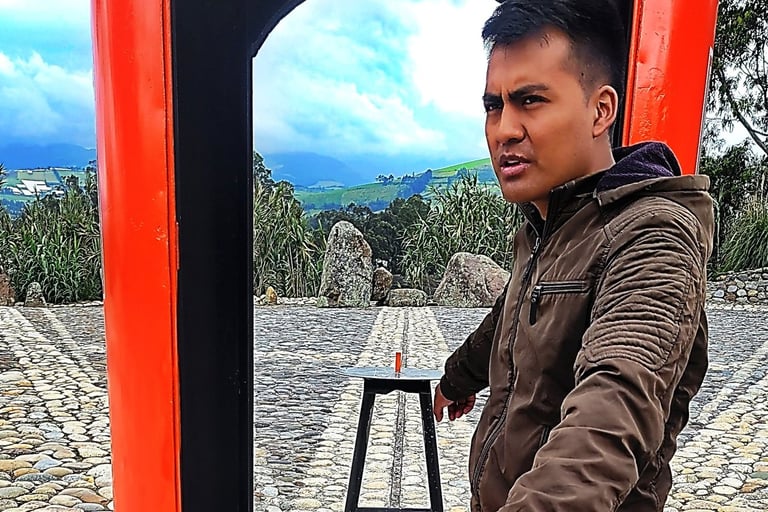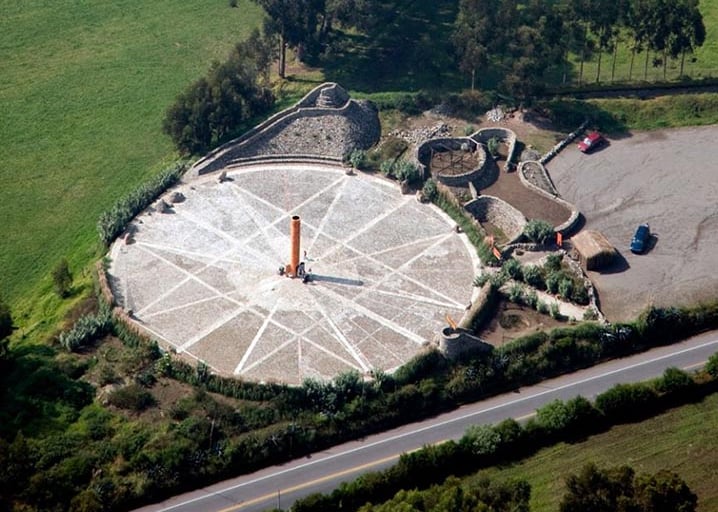Quisato
The True Center of the World Hidden in Ecuador's Highland
Alicia Bozza
4/25/20256 min read


Quisato
The True Center of the World Hidden in Ecuador's Highlands
Beyond the Tourist Monument: Finding Earth's True Middle
When most travelers think of Ecuador's "Middle of the World" (Mitad del Mundo), they picture the iconic yellow-lined tourist complex just north of Quito with its towering monument. Yet just a few kilometers away lies Quisato, a humble site with a surprising claim: it marks what many scientists now believe is the actual equator line
—the true center of our world.
While thousands of tourists pose for photos at the famous Mitad del Mundo monument each day, those seeking geographical accuracy and deeper cultural connection make their way to Quisato, where ancient indigenous wisdom and modern GPS technology have found remarkable alignment.
The Geographical Truth Behind Quisato
The story of Ecuador's dual equator sites begins with a measuring mistake. In 1736, a French expedition led by Charles Marie de La Condamine conducted the first scientific attempt to determine the exact position of the equator. Using 18th-century technology, they placed it at what is now the popular Mitad del Mundo tourist complex. For centuries, this location was accepted as accurate.
However, with the advent of GPS technology in the late 20th century, scientists discovered something surprising: the actual equatorial line runs about 240 meters north of the famous monument. This is where Quisato now stands—a simple yet meaningful site marked by a sundial monument that spans 54 meters in diameter.
What makes Quisato's claim particularly compelling is that:
GPS Confirmation: Modern satellite technology consistently confirms Quisato's position at 0°0'0" latitude—precisely straddling the northern and southern hemispheres.
Observable Phenomena: Only at the true equator can visitors witness certain unique equatorial effects that fail to manifest at the more famous monument site.
Indigenous Knowledge: Perhaps most fascinating, local indigenous communities had identified this exact location as special long before European expeditions arrived with their measuring instruments.
The Science That Supports
Quisato's Claim
At Quisato, visitors can witness several phenomena that only occur directly on the equator:
The Coriolis Effect in Action
The most famous demonstration involves water draining from a portable basin. When positioned directly on the equator line at Quisato, water drains straight down without spinning. Move just a few meters north, and it spins counterclockwise; a few meters south, and it spins clockwise. This demonstration of the Coriolis effect cannot be replicated at the conventional Mitad del Mundo monument—strong evidence that Quisato marks the true division between hemispheres.
Perfect Equinox Alignment
The 54-meter sundial at Quisato is designed to mark not only hours but also months. During equinoxes (March 20 and September 22), the sun casts no shadow at noon when observed from the center of the sundial—a phenomenon that can only occur at precise equatorial locations. The sundial's design incorporates 12 columns representing each month, with indigenous symbols highlighting the agricultural calendar of pre-Columbian Andean cultures.
Balanced Gravitational Forces
Perhaps most subtly convincing is the balance experiment. At Quisato, visitors can attempt to stand an egg on its end on the head of a nail—a feat that becomes notably easier when performed exactly on the equator due to the perfect balance of gravitational forces. While this demonstration requires skill regardless of location, success rates are measurably higher at Quisato than at other claimed equatorial sites.
Indigenous Knowledge: Centuries Ahead of GPS
What truly sets Quisato apart is how its "discovery" validates indigenous wisdom. Archaeological evidence suggests that pre-Incan cultures, particularly the Quitu-Cara people who inhabited this region, had identified this precise spot as cosmologically significant centuries before European explorers arrived.
Researchers have found that several ancient structures in the region align with astronomical events that would only be visible from the true equatorial position. Local indigenous communities maintained oral traditions about this location's significance even as the official monument was built elsewhere.
"Our ancestors understood the sky in ways modern science is only beginning to appreciate," explains Javier Quishpe, an indigenous guide at Quisato. "They could feel the center of the world through observation and connection to Pachamama (Mother Earth)."
This traditional knowledge encompasses understanding of:
Solar patterns unique to equatorial positions
Agricultural cycles that respond to the equal day-night patterns
Celestial alignments visible only from true equatorial viewpoints
When GPS technology confirmed this traditional knowledge in the late 20th century, it represented a powerful validation of indigenous science that had been dismissed for centuries.
The Quisato Experience:
Authentic Connection to Earth's Center
Visiting Quisato offers a profoundly different experience from the bustle of the main Mitad del Mundo complex. Here, amid the breathtaking Andean landscape with views of impressive volcanos on the horizon, visitors find a contemplative space that honors both scientific accuracy and cultural heritage.
The sundial monument itself represents a fascinating blend of indigenous and Western knowledge systems. Its design incorporates:
Traditional Andean cosmological symbols
Precise astronomical alignments
Recognition of both hemispheres through dual symbolism
Educational elements explaining equatorial phenomena
Guides at Quisato, many from local indigenous communities, offer demonstrations of the site's unique equatorial properties while sharing cultural perspectives on what it means to stand at the center of the world.
"Standing here, you are perfectly balanced between north and south," one guide explains. "In indigenous cosmology, this represents harmony—a place where opposing forces find perfect equilibrium."
Beyond Geographic Precision: The Cultural Center of the World
What makes Quisato's claim to be the "true center of the world" particularly compelling goes beyond mere geographical precision. The site represents a conceptual center where multiple ways of knowing—indigenous wisdom, Western science, astronomical observation, and cultural heritage—converge and validate one another.
This convergence offers visitors a more nuanced understanding of what "center" can mean:
Geographical center: The precise midpoint between hemispheres
Cultural center: A place where indigenous knowledge systems have flourished for millennia
Historical center: Where pre-Columbian civilizations demonstrated sophisticated understanding of celestial movements
Spiritual center: A location many indigenous communities consider an energy vortex where connection with cosmic forces is heightened
Unlike many tourist sites that privilege one perspective (typically Western scientific or colonial viewpoints), Quisato honors multiple ways of understanding our position on Earth.
Practical Information for Visitors
For travelers seeking to experience the true center of the world:
Quisato is located approximately 40 minutes north of Quito in the San Antonio parish
Many visitors combine it with a visit to the main Mitad del Mundo monument for comparison
Local guides offer demonstrations of equatorial phenomena throughout the day
The site includes educational displays explaining both the scientific and cultural significance
Views of the surrounding volcanic landscape are spectacular on clear days
The site is less commercialized than the main monument, offering a more contemplative experience
Many visitors report that standing with one foot in each hemisphere at the authentic equator creates a profound sense of connection to our planet—a feeling that transcends the mere novelty of straddling a line.
The Meaning of "Center" in a Complex World
As we travel the globe seeking meaningful experiences, places like Quisato remind us that "center" can be defined in multiple ways. While GPS coordinates provide one type of precision, indigenous cultures offer another form of accuracy born from generations of observation and connection to place.
Perhaps what makes Quisato the "true" center of the world isn't just its geographical precision but its ability to unite different knowledge systems in harmony. Here, at this humble sundial among the Andean highlands, visitors can experience a rare moment when ancient wisdom and modern science stand in perfect alignment—much like the sun directly overhead during equinox.
For the thoughtful traveler, Quisato offers something more valuable than a typical tourist photo opportunity. It provides a chance to contemplate our place in the cosmos while honoring those who understood this special location long before satellite technology confirmed what they already knew: that here, at this precise spot, we stand at the very center of our world.
Have you visited Quisato or other equatorial monuments? What was your experience like? Share your thoughts in the comments below!








ALICIA HELPS
Guiding soul-led journeys through branding, learning, art, voice, and sacred adventure.
CHOOSE YOUR JOURNEY
contact@aliciahelps.com
1-973-580-7943
© 2025. All rights reserved.